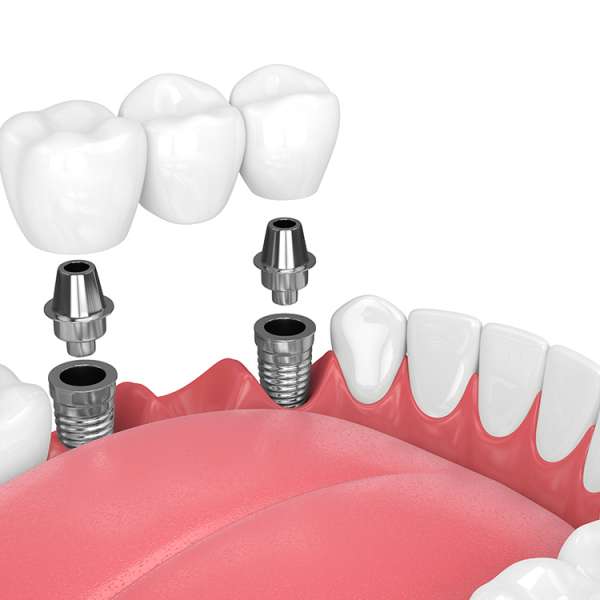What is a Dental Bridge?
A dental bridge is a fixed (meaning cemented in and not removable) appliance that are designed to fill those gaps of missing teeth with realistic, artificial looking teeth and gum.
Bridges can be made from gold, metal alloys, porcelain, ceramics or a combination of these things.
Are You Suitable for a Bridge and Why?


Bridges are a relatively good solution to replace missing teeth in order to restore your smile, improve the appearance and support for the shape of your face, can help with eating and speaking and can prevent other teeth from drifting out of position.
Suitability of bridge depends on the health status of the supporting teeth in terms of tooth structure, health of the pulp (nerve of the tooth) and gum.
Sometimes, root canal treatment may be required on the supporting teeth before a bridge is done.
Our dentists will inform you if your case is suitable for a bridge.


It typically takes our dentist two separate appointments to make and place a new dental bridge for a patient.
During the first appointment, the teeth are trimmed and shaved down to smaller sizes.
An impression (mould) is taken and sent to the laboratory for fabrication of your bridge and this may take 10-14 days.
Meanwhile, a temporary bridge is made and cemented.
At the second visit usually about two weeks later, the temporary bridge is removed and the permanent bridge is cemented in.
How Long Can A Dental Bridge Last?
With routine dental visits and excellent home care, bridges can last in excess of 10-15 years.
The bridge will not spoil as it is made of artificial material but the natural teeth below the bridge can get infected with tooth decay and gum disease if not well maintained.
The longevity of the bridge thus depends on the patient’s ability to keep it clean and followed by regular dental check-up by the dentists.
Is The Procedure For Making A Dental Bridge Painful?
The procedure may cause slight discomfort or pain if the supporting teeth are alive.
Our dentist will manage it by using a local anaesthetic to numb the tooth and surrounding tissue before performing the procedures.
If the supporting teeth are root-canal treated, then anaesthetic is unnecessary as the root treated teeth have no more nerves, thus cannot feel anything during the trimming process.
FAQs
How Do I Look After My Dental Bridge?
Bridges do require additional care over and above good brushing and flossing. The most difficult part of maintaining a bridge is to adapt floss underneath the ‘false’ tooth in order to keep that area clean. Our dentist will educate and assist you with this.
What are the Disadvantages of Dental Bridges?
In order to prepare teeth for a bridge, tooth structure must be removed by trimming it down to accommodate the fitting of the new bridge. This can be justified if the teeth that are being prepared are decayed or heavily restored. In the case of teeth that have never had fillings and are in good health otherwise, the idea of cutting them down to prepare for a bridge is not ideal. In this case, dental implants can be a better alternative treatment.

